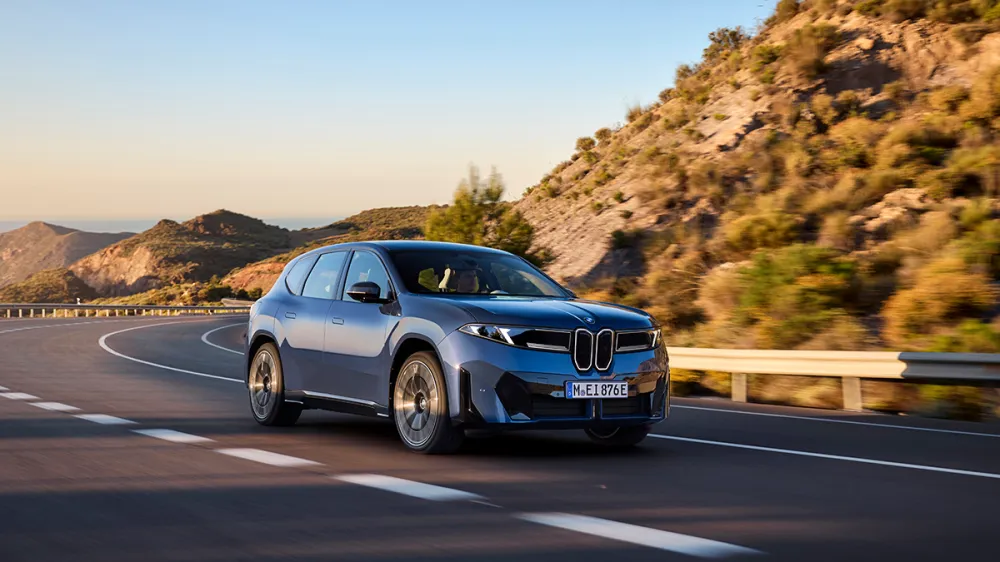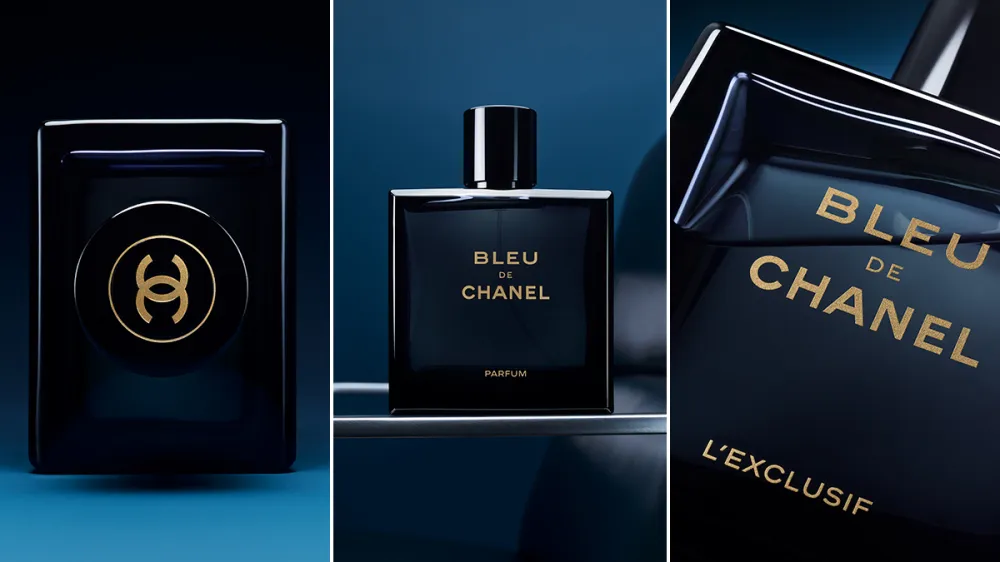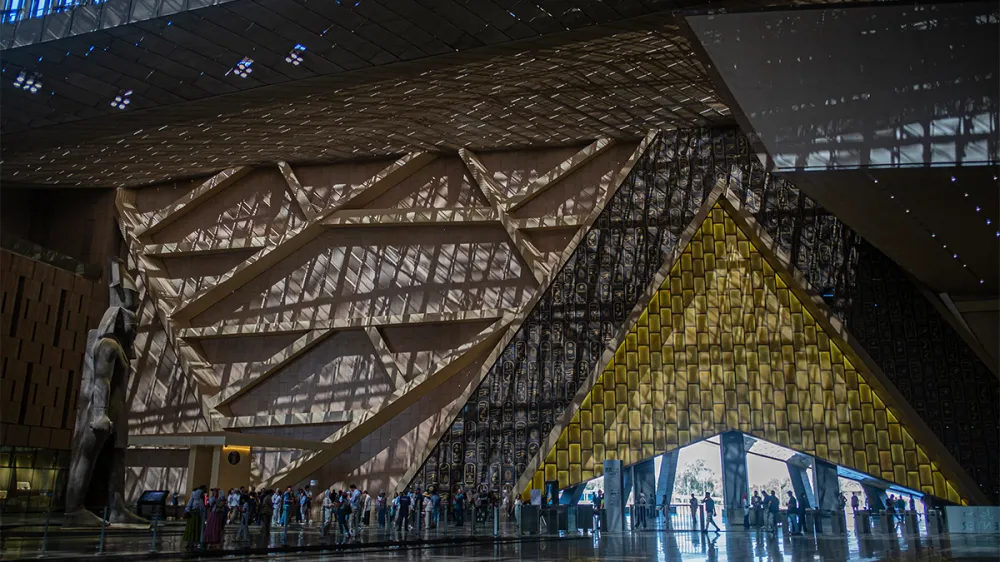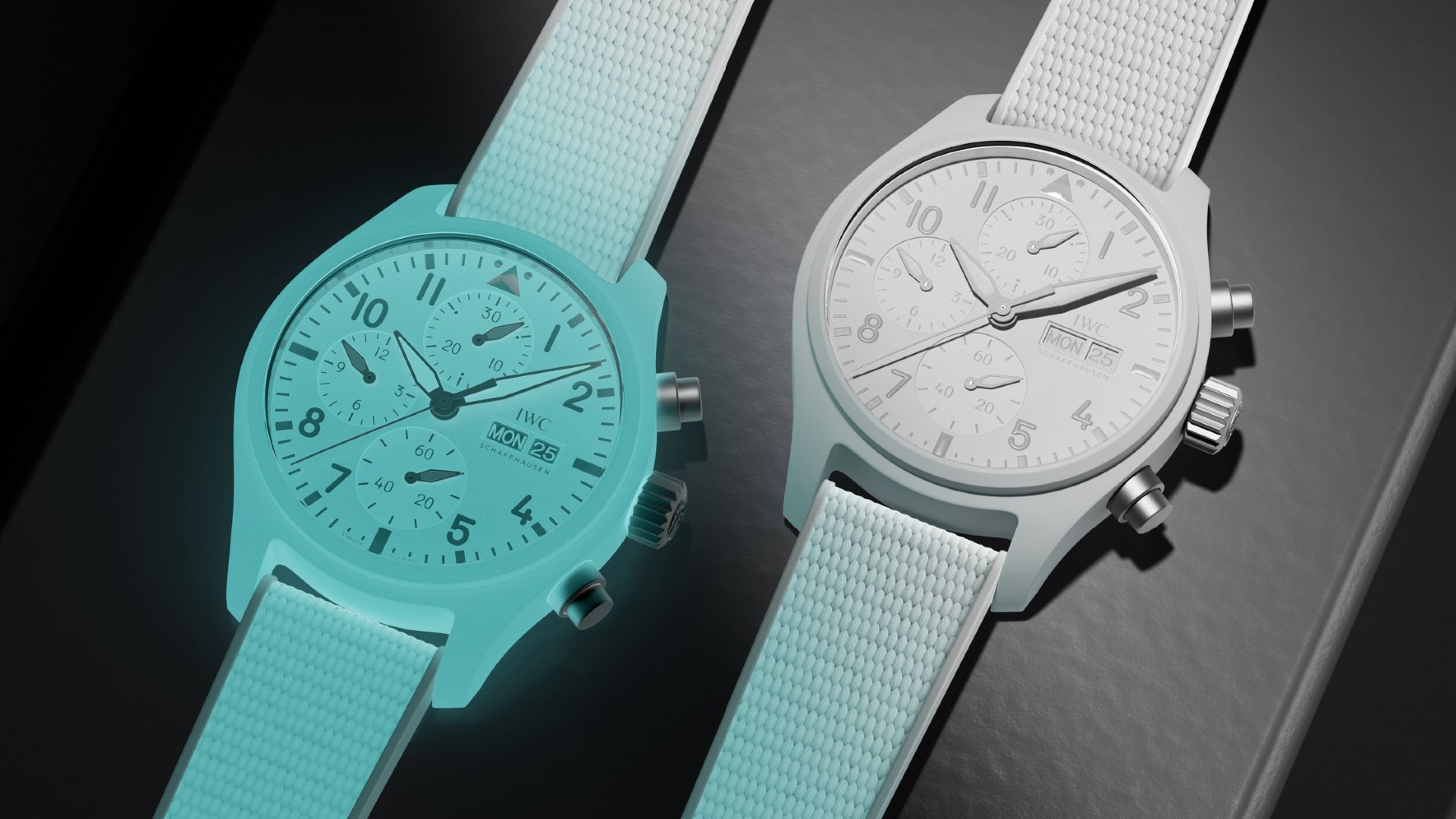
Watch of the Week: IWC Ceralume Pilot’s Chronograph
The concept watch hints at the future of IWC’s proprietary luminous ceramic technology.
Related articles
Did you catch Lewis Hamilton rocking a new IWC Schaffhausen timepiece at the Monaco Grand Prix over the weekend? We did too, and as curious watch fanatics, we couldn’t help but speculate on what exactly this stark-white timepiece could be. A new iteration of the 2022 Pilot’s Watch Chronograph TOP GUN “Lake Tahoe” edition, perhaps?
Sort of.
Earlier this week, IWC took to Instagram to reveal what its experimental engineering division, XPL, has been working on over the last few years. Introducing the new IWC Ceralume Pilot’s Chronograph—a ceramic watch, albeit a prototype, that completely glows in the dark, from case to dial to strap!
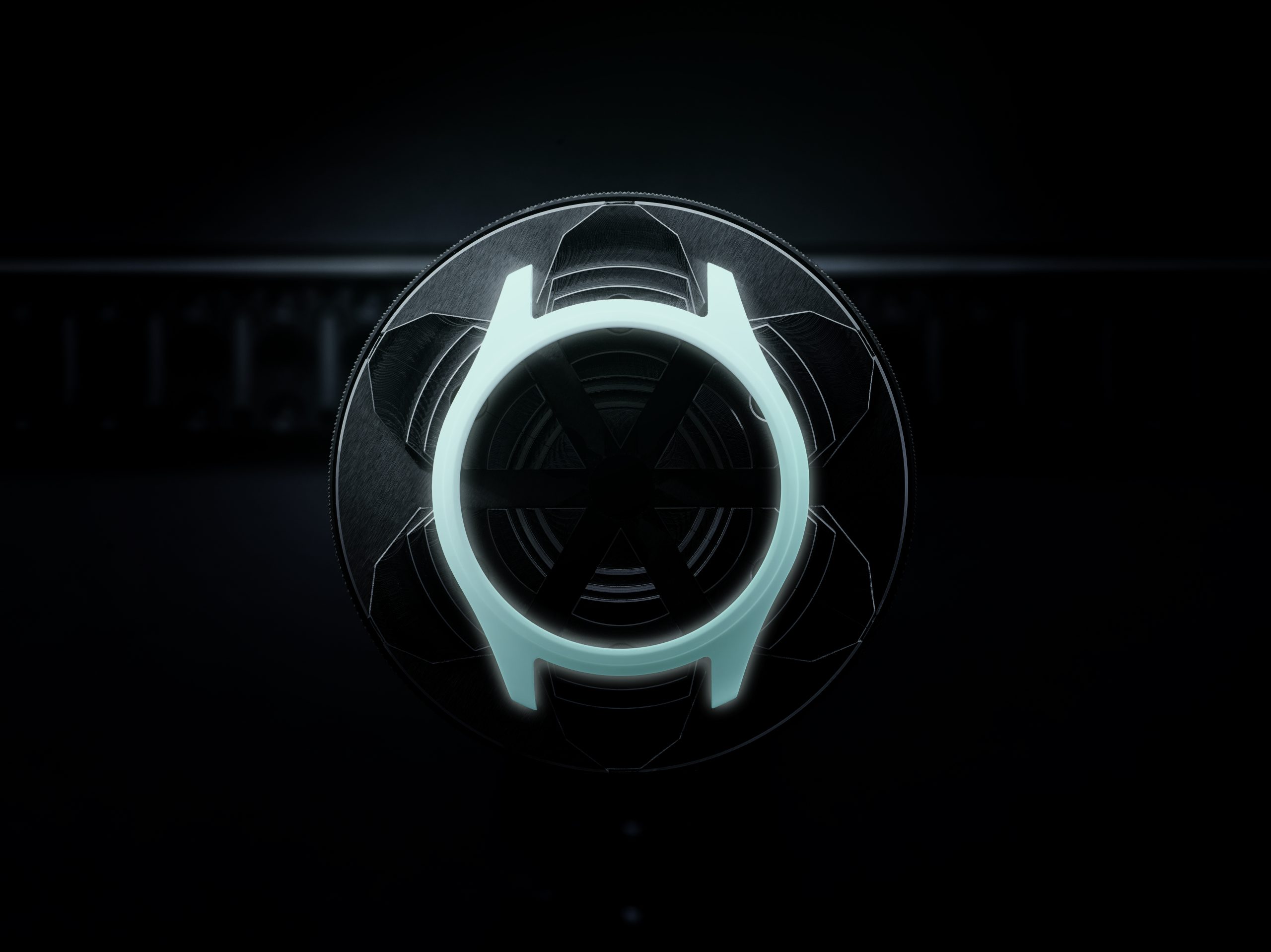
Such wizardry is thanks to a proprietary luminous ceramic technology that IWC calls “Ceralume.” This technical feat has allowed IWC watchmakers to produce their very first fully luminous ceramic watch. Building on its 40-year journey as true pioneers of engineering ceramic material within watches—ceramic is notoriously difficult to work with, you see—IWC is no stranger to such technical feats.
Thanks to the homogeneous mixing of ceramic powders with high-grade Super-LumiNova pigments, IWC has fashioned a luminous material that acts like a battery for storing light energy. Utilising the new Ceralume technology, this fully luminous concept Pilot’s Chronograph emits a bright blueish light that lasts more than 24 hours.
“With the first fully luminous ceramic case rings, we underscore our role as a pioneer and innovator in ceramic watches. The development of Ceralume took several years. The main challenges we faced were producing watch cases with maximum homogeneity and meeting our exacting quality standards,” says Dr. Lorenz Brunner, Department Manager Research & Innovation at IWC Schaffhausen.
“To achieve these goals, we engineered a ground-breaking new manufacturing process – tailored to the unique combination of ceramic powders and Super-LumiNova pigments.”
If we’re to get extra technical, the ceramic material absorbs light energy from sunlight (or artificial light), stores it temporarily, and then emits the absorbed energy as visible light—the luminous “glow” that you see below. According to IWC, this cycle is infinite and will never cause the material to age or diminish its light storage capacity.
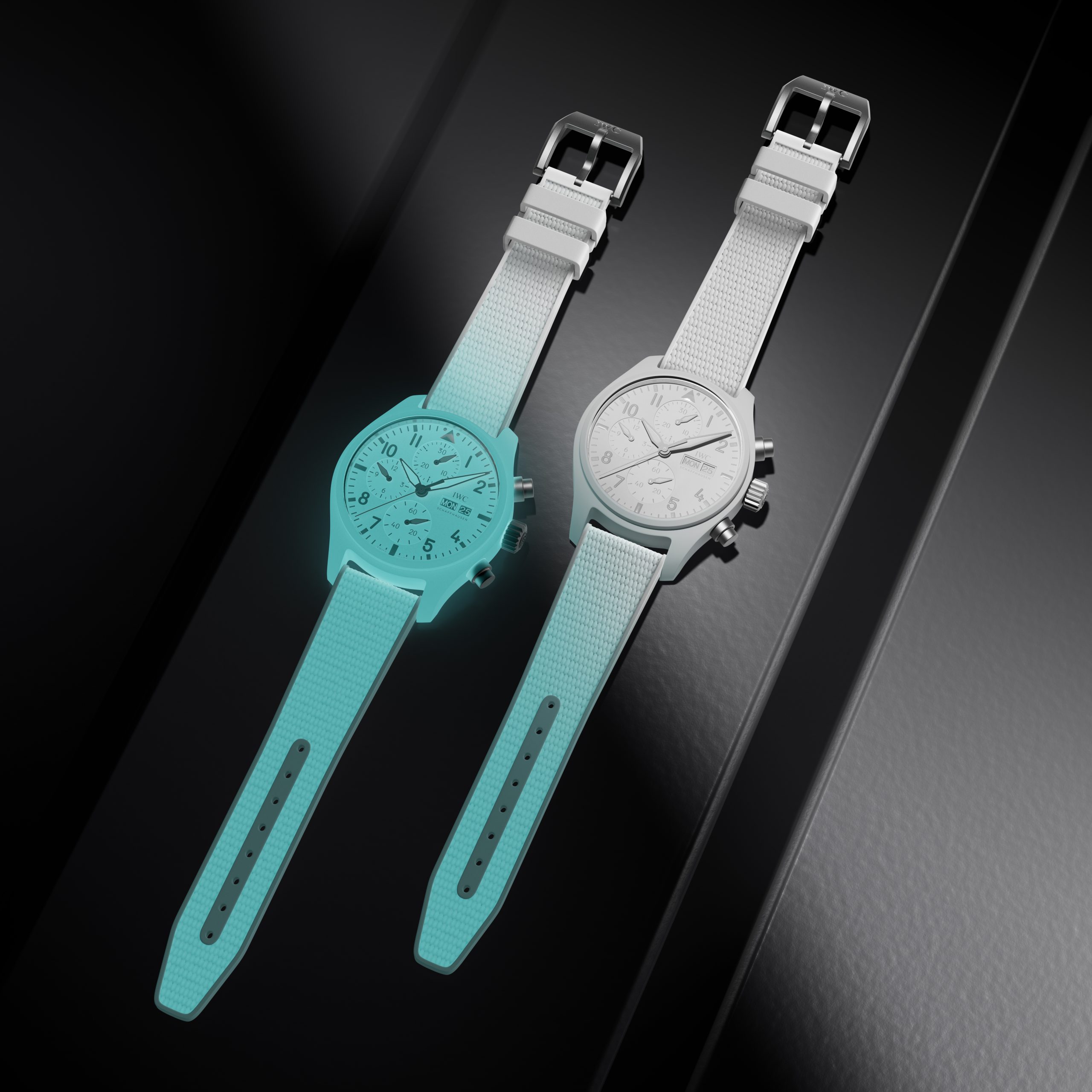
Developed completely in-house by IWC and its Experimental Engineering Division (XPL), the patent-pending Ceralume technology will undoubtedly form the foundation of future developments and releases, with a broader commercial release imminent.
—
To learn more, visit iwc.com
Subscribe to the Newsletter
Recommended for you
Chasing the Sun: Parmigiani Fleurier’s Summer Statement
Parmigiani Fleurier’s Tonda PF Sport Chronograph Sandstone is dreaming of a Mediterranean summer.
September 29, 2025
The 13 Best Watches at the Emmys, From Noah Wyle’s Cartier to Tramell Tillman’s Audemars Piguet
This year’s awards included big names like Noah Wyle and Tramell Tillman, showcasing plenty of stunning timepieces on the red carpet.
By Nicole Hoey
September 18, 2025
You may also like.
You may also like.
How Sailing Shaped Loro Piana’s Most Iconic Designs
Pier Luigi Loro Piana grew his family textile business into a celebrated fashion house by following his passion for sports on land and at sea.
The Regatta Connection
The race village at Port de Saint-Tropez is awash with people in nautical navy and white, the de facto dress code for the Loro Piana Giraglia regatta. This is the second year the fashion house has lent its name to one of the Mediterranean’s most prestigious summer races. The course zooms from the French coast to Genoa, Italy, taking a sharp turn past Giraglia, a small island off Corsica’s northern tip. It’s the latest in a long line of marine events the brand has sponsored, dating back more than 20 years.
The link between sailing and the brand—and more consequentially the Loro Piana family—is exemplified by the man Robb Report is here to meet: Pier Luigi Loro Piana. An avuncular figure in his 70s with the physique of a man who has enjoyed life, Pier Luigi fell in love with sailing in his late teens, when a family friend took him for a cruise in a sloop.
“Using the wind to go faster or slower, driving the boat like it has an engine, it’s really fascinating,” he says. Inevitably, he started competing. “When you’re sailing, you’re always looking for other boats to go and fight with. It’s an instinct,” he says. And then, with considerable understatement, “I think it’s a nice hobby.”
A Life Under Sail
He currently owns two boats: My Song, which you can see on these pages, is a 25 m sailing yacht that competed in the Regatta. There’s also Masquenada, a comfortable 50 m explorer. It’s a commendable set-up befitting a man who shaped one of Europe’s most celebrated fashion houses.
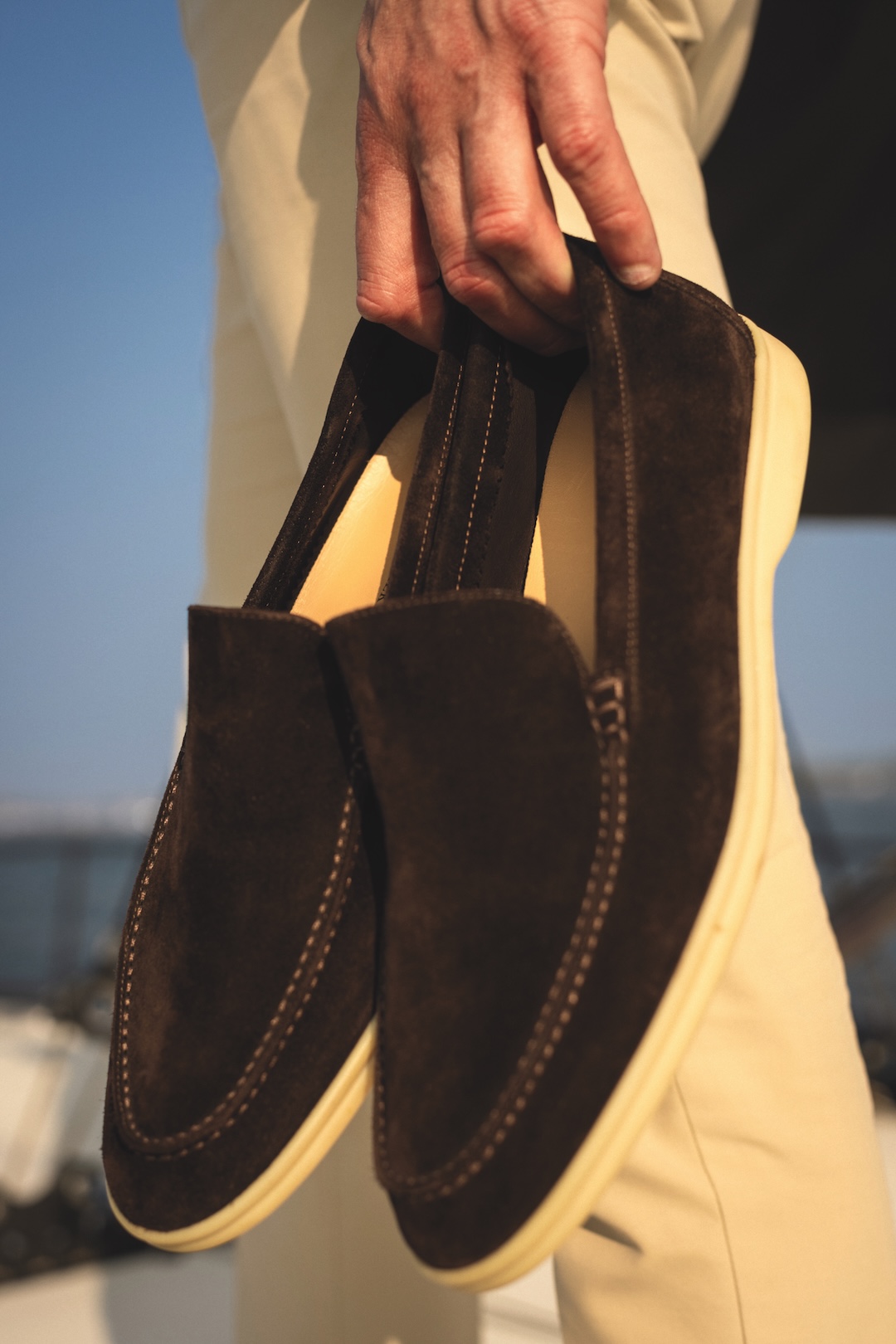
A Family Business Turned Global Powerhouse
The textile and clothing company that bears his family’s name was launched by an ancestor, Pietro Loro Piana, in 1924. A few generations later, Pier Luigi and his brother, Sergio, would run it for four decades until LVMH acquired a majority stake for around $4 billion in 2013. Sergio passed away that year; his widow and Pier Luigi still own a share of the brand between them.
The brothers proved innovative custodians, moving the company upmarket with an insistence on ultra-fine materials and groundbreaking fabrications. And the connection with sports—specifically yachting, horseback riding, skiing and golf—is integral to how the brand positions itself. As Pier Luigi recalls, such associations often had self-serving origins.
“These are the sports my brother and myself were doing,” he says. “We were very committed in business in the 1970s, ’80s, ’90s, so we were like our customers: people that like to work hard but also play hard. And that meant sports.”
Innovation Born of Necessity
This affinity often led them to develop durable, yet elegant, materials and gear for their off-duty pursuits, eventually offering versions to their athletic clientele. “We engineered products with unusual properties, natural fibres like wool or cashmere with a membrane that makes it waterproof and windproof… For research and development, I was the first victim,” he says with a chuckle. Once, he wanted a ski jacket that was “warmer, lighter, softer and better” than nylon models, so he made a prototype to test on the slopes. It gave birth to the Loro Piana Storm System, launched in 1994. The line’s wind-resistant waterproof wool and cashmere has since been used by brands around the world. “I still have this jacket,” he says.

The same process happened on the water. A beloved reversible bomber, with knitted cashmere on one side and waterproof polyester on the other, was born from Pier Luigi’s need for a functional jacket to wear on his yacht. “It’s very light, doesn’t wrinkle, it’s warm, windproof,” he says. “It solves so many problems.”
He takes less credit for perhaps the brand’s most famous—and almost certainly most imitated—product, the white-soled suede Summer Walk loafers. “That was my brother,” he says. “When we were 20, 30 years old, we went sailing and there were only [Sperry] Top-Siders or Sebagos. But when the soles got worn, they got hard and slippery.”
The answer: a non-marking sole with grip—“like a tire you use in Formula 1 when it’s wet”—which Sergio got his bespoke shoemaker to sew to suede uppers. Eventually, they produced two versions: a loafer and the Open Walk, a model with a slightly higher top. “We discovered people were using them also for formal wear because they were so comfortable,” says Pier Luigi. “It’s really a successful story that started from product research.”
And if problem-solving can turn your family business into a giant of global style, clearly it pays to be a little selfish.
You may also like.
The Supercar of Pool Tables
In a rare fusion of Italian design pedigree and artisanal craftsmanship, Pininfarina and Brandt have reframed the barroom game as aerodynamic high art.
In the rarefied realm where leisure meets design, the latest object of desire doesn’t purr down the autostrada—it commands the room from a single sculptural base. The Vici pool table, a collaboration between Italian automotive legend Pininfarina and Miami’s bespoke table-maker Brandt Design Studio, reimagines the game with the same aerodynamic poise and artisanal precision that have graced some of the world’s most beautiful vehicles.
Named for Julius Caesar’s immortal boast—“Veni, vidi, vici”—this limited-edition series transforms billiards from casual diversion into a declaration of style. Every curve is deliberate, from the ultra-thin playing surface clad in tournament-grade Simonis cloth to the seamless integration of Italian nubuck leather and precision-milled metals. The effect is more haute sculpture than barroom pastime—yet it meets exacting professional standards.
For the true connoisseur, the debut PF 95 Anniversario edition celebrates Pininfarina’s 95-year legacy in just 95 numbered pieces. Finished in dark-blue lacquer with rose-gold accents and a flash of red felt, each table is discreetly nameplated—a tangible claim to an heirloom in the making.
“It’s not just about how it plays—it’s about how it lives in a space,” says Dan Brandt, the master craftsman whose work has long graced the world’s most exclusive interiors. Whether anchoring a penthouse salon, a members’ lounge or the main deck of a superyacht, the Vici is designed to stir conversation before the first break.
For those accustomed to Pininfarina’s sleek automotive silhouettes, this is a chance to bring that same lineage of movement, form and Italian refinement into the home. Only now, the horsepower is measured not in engines—but in the geometry of a perfect shot.
From pool to midcentury to Ottoman, we’ve got all the table angles covered at Robb Report Australia & New Zealand —plus more home-worthy pieces.
You may also like.
Ralph Lauren’s Oak Bluffs Collection Is a Masterclass in Classic Summer Style
The capsule honours the heritage of the Martha’s Vineyard community, which has been a haven for generations of Black families.
Building on his partnerships with Morehouse and Spelman colleges, Ralph Lauren now takes us off campus to Oak Bluffs for summer break. A haven for Black communities on Martha’s Vineyard for more than a century, Oak Bluffs’s generations of style and tradition come together in a collection of menswear and womenswear that marries elements of classic collegiate style with coastal leisurewear. “This collection is about more than a charming coastal town; it’s a story of the American dream,” said Ralph Lauren, who called on alumni of the two schools working at Ralph Lauren to conceptualise and design.

As with any story, visuals are key. Lauren enlisted author, director, and producer Cole Brown, who has summered on Martha’s Vineyard for decades, to bring the stories of Oak Bluffs to life. The campaign, which was lensed by photographer Nadine Ijewere and videographer Azariah Bjørvi, both of whom worked on the award-winning Polo Ralph Lauren campaign with Morehouse and Spelman Colleges in 2022. The partnership paid off, with transportive imagery that reads more like a family album than an ad campaign. Anchoring it all is a short documentary that mines archival footage and features the stories of business owners, multi-generational homeowners, and other locals along with Morehouse and Spelman alumni.

“Every piece in this collection tells a story, from quilted souvenir jackets to collegiate crewnecks and cardigans. We’ve captured the spirit of this town—its leisurely summer bike rides, its five-to-seven front porch socials, its nautical traditions—and transformed that into designs that feel as special as the place itself,” David Lauren, the brand’s chief branding and innovation officer, tells Robb Report. The Polo Ralph Lauren for Oak Bluffs collection will be available on RalphLauren.com, the Ralph Lauren app, select Ralph Laure stores, and Morehouse and Spelman College bookstores.

About those front porches: To encourage another century of idyllic, cedar-shingled summers, Ralph Lauren has also partnered with the Cottagers, Inc., a nonprofit of 100 Black female homeowners on Martha’s Vineyard focused on architectural and cultural preservation. The brand is also continuing its partnership with the United Negro College Fund, supporting HBCU scholarships and fostering early talent development and recruitment opportunities.
View the full-length documentary, A Portrait of the American Dream: Oak Bluffs, on YouTube. A special screening and panel discussion will also take place on August 8, 2025 at the Martha’s Vineyard African American Film Festival.
You may also like.
Home is Where the Art Is
Six standout Australian galleries to know now.
Australia’s gallery scene is booming. More galleries than ever before are going on the road to participate in art fairs in scene that is rapidly maturing. Meet the passionate local owners from around Australia who are energising the creative milieu with the abstract, the edgy, the Indigenous and the generally astounding.
Hugo Michell Gallery

The district may not roll off the artistic tongue like Paris’s Montmartre or London’s Shoreditch, and yet the prim hedges of Adelaide’s Beulah Park suburb provide cover to a stealth powerhouse of the Australian contemporary art movement, tucked away in a charming, blink-and-you’ll-miss-it converted Victorian workers’ cottage. Since 2008, the Hugo Michell Gallery has unflappably carried the torch for established and emerging acts with equal fidelity, across a broad sweep of mediums from photography to printmaking, textile to ceramic. “We try not to get caught up in the hype and handle each artist we represent with the nuance required for promoting their work,” says Michell, currently counting 28 artists on his books. One notable on this year’s busy docket is Melbourne-based Richard Lewer, a social realist—already snapped up by the National Galleries of Australia and Victoria, no less—who for a month from April 10th will probe the uneasy relationship between crime, sport and religion. While comfortable in the skin of his homely suburban bolthole, Michell is not averse to braving the rigours of the Australian art fair circuit (“They’re a bit of a circus, but who doesn’t love a circus?) and often undertakes house visits to acquaint himself with the whims of new customers. “One of the things that gives me the most joy is building a collection for a client,” he says. “We have worked with for 16 years, tailoring and sourcing works for them.” More proof that you don’t need a headline location to generate the biggest stories.
hugomichellgallery.com
Cassandra Bird Gallery

The art sphere often challenges the myth that married partners should not become gallerists—see Iwan and Manuela Wirth of Hauser & Wirth fame, among other examples. And so it is that Cassandra Bird and husband Fabian Jentsch are rapidly cementing a reputation as one the Australian art scene’s supercouples with their 2023-acquired Potts Point space, an expansive four-level heritage terrace fizzing with congeniality, making visitors feel like they have popped to a friend’s (expertly curated) home for elevenses. Which is no great shock: the property doubles as the duo’s own home. Bird brings a wealth of experience, and a hefty contacts book, thanks to long, respected stints in the Big Apple and Berlin, and nine years at Sydney’s RoslynOxley9 Gallery; Jentsch, meanwhile, is an experienced artist, exhibition maker and set designer. “We try to enthuse people, get them excited as we are about those we work with,” says Bird. Meander across the property’s wooden floorboards—perhaps diverting for a chat in the communal courtyard that doubles as a social hub and ideas-exchange forum—and you will enter the realm of Perth-born graphic painter Jedda Daisy-Culley, who has a hallway and wall dedicated to her work; venture upstairs and deep dive into locally based experimental photographer Laura Moore; head into the basement and peruse the collective works the Tennant Creek Brio, out of Warumungu Country in the Northern Territory. All 24 of the gallery’s artists unite under the theme of timelessness. “We are into investigating quality and showing transformational and breakout work from artists,” says Jentsch. “The work we choose must have something that is strong value for us.” Here’s to the sanctity of marriage.
D’lan Contemporary

It speaks volumes for the international reach of Indigenous art that D’lan Contemporary opened an outpost in New York long before expanding the gallery beyond its Melbourne roots to set up shop in Sydney. Then again, founder and director D’lan Davidson is not afraid of expanding his frontiers as a means of hawking Australia’s most vital cultural outpourings; in 2016, he left the Sotheby’s Australia auction house, where he was ensconced as head of aboriginal art, to launch D’lan Contemporary as the go-to gallery for secondary market First Nations art; and he recently travelled to Maastricht in the Netherlands for the prestigious European Fine Arts Foundation Art Fair, promoting a series of Western Arnhem bark paintings and works by Paddy Bedford, Emily Kame Kngwarreye, Rover Thomas and other. Closer to home, Davidson has surrounded himself with a team brimming with the requisite Indigenous art smarts, including chief curator and gallery director Luke Scholes. From May 8th-July 4th, the Significant exhibition, a mainstay of the Melbourne gallery for the past ten years, will show across all three of D’lan Contemporary’s locations. “Our exhibitions and all our advocacy work seek to further support and develop the burgeoning global interest in Australian First Nations art and artists,” says Scholes. As if further proof were needed of its commitment, the gallery donates 30 percent of its profit back to artists and their communities. Bravo.
N.Smith Gallery

Enter Nick Smith’s compact office and you notice how the walls are studded by the artworks of those he represents; this is a man, you feel, who has a more intimate connection to his stable than the average gallery chief—an instinct confirmed upon discovering that he has invested his entire life savings into the Surry Hills space. When we meet, Smith’s whiteboard is teeming with collaborative projects, hinting heavily at the kind of edgy, thought-provoking artists that his outfit—comprised of five full-time staff—is renowned for nurturing. “It’s constant, but amazing,” says Smith in his typically reserved manner, more studious scientist than reengage gallerist. “I wanted to contribute to culture in my own way.” The gallery’s current ascension allays any empathetic fears of impending financial doom. This past February, Smith—who cut his teeth at Philip Bacon Galleries in Brisbane and Sydney’s Sullivan+Strumpf—collaborated with the Australian High Commission in India to represent Darrell Sibosado at India Art Fair ’25, and throughout the year will be partnering with the Sydney chapter of Soho House to host a series of private viewings and artist studio visits. Even so, he now splits his time equally between private and public projects, often mentoring artists at all stages of their creative journeys. “It’s that forward momentum. It’s that feeling of progressions and going somewhere that I love,” says Smith. Indeed, the only way is up.

Palas
It is hard—nay, almost impossible—to imagine Palas founders Tania Doropoulos and Matt Glenn frantically trying to scoop up whoever is flavour of the month on Sydney’s perennially shifting art circuit. Here are young gallery partners prone to a slower, more considered approach, instead recruiting a tight roster of internationally famed artists, and choosing to nurture relationships that have been years, sometime decades, in the making. Case in point: video performance maestro Shaun Gladwell, who represented Australia at the 2007 Venice Biennale (a 20-year affiliate), and Melbourne-based artist and noise-musician Marco Fusinato (15 years), who also flew the artistic green and gold at the same festival in 2022. Add to that list Canadian multi-media artist Tamara Henderson and Irish sculptor Eva Rothschild, currently working out of London, and it is clear Palas have a formidable roll call to lean on. “We’re investing a huge amount of time into their processes as art makers,” says Doropoulos. “And I think by extension, we’ve got really good working relationships with other galleries throughout the world.” For its founders, the Palas gallery—which opened in Sydney’s resolutely hipster Waterloo suburb just over a year ago with a silkscreen painting medley by the aforementioned Fusinato—is somewhat of a flag-planting endeavour on home soil: both earned a certain amount of their stripes overseas—Doropoulos as former artistic director of Frieze London and Frieze Studios, and Glenn at Sadie Coles HQ, also in the British capital. Australian art disciples will no doubt be praying for a long domestic residency.
Coma

If Sotiris Sotiriou’s consciously balanced ensemble of black Saint Laurent suit, single gold chain and flash of bare chest are anything to go by, the Coma gallery founder wields a sharp eye—a handy attribute to have when your career depends on identifying aesthetic clout, what hits and what doesn’t. From humble beginnings in 2016 in a subterranean road space next to Elvis Pizza on Sydney’s New South Head Road, his enterprise gradually flowered, first to East Sydney, then Chippendale, before fully blooming at his current space in up-and-coming Marrickville, in what was once a coffee factory. The predominantly light-industrial area has witnessed around half a dozen new gallery debuts in recent years, and Coma’s door-fling, filled as it was with hip young Inner West couples sourcing bold, ambitious art for their homes and offices, suggests Sotiriou has timed his arrival to perfection. February’s opening exhibition was hosted by Australian (but Santa Fe based) figurative painter Justin Williams, whose approach riffs on the folkloric traditions of Russian and Polish art, rich with symbolism and psychological details; this work forms a striking counterpoint to the abstract expressionism of other Sotiriou recruits, such as Zara June Williams and her partner Jack Lanagan Dunbar. The Coma head honcho, who had a spell selling to wealthy clients at Nanda Hobbs, says that private clients now make up most of his customer base. This year, as he prepares to attend three international art fairs, he estimates his artistic head count to increase by 30 percent. He can, no doubt, also point you in the direction of a fine tailor.
You may also like.
Car of the Year
Always an unmissable highlight of the automotive calendar, Robb Report ANZ’s annual motoring awards set a new benchmark among glorious Gold Coast tarmac.
Over two unforgettable days, our motoring sages and VIP guests embarked on an exhilarating journey from Surfers Paradise to Brisbane and back again—traversing an irresistible selection of terrain in our exotic rides, from deserted rainforest-lined b-roads to testing mountain switchbacks with dizzying—sometimes heart-in-mouth—views over the southern Queensland peninsula. And as befitting an event starring the crème de la crème of auto marques, we did so while savouring the best in luxury and gastronomy—capped off with an extraordinary superyacht experience at Sanctuary Cove.

The ten contenders for the Car of the Year were not the only dream machines on show. The first day’s adventure kicked off at the Langham Hotel and included a midday pit stop at the glorious Beechmont Estate, where our fleet of drivers were greeted by a stunning array of vintage cars exhibited in a concours d’elegance-style display.

The sumptuous feast for the eyes on offer at Beechmont, a quaint country village located between the Lamington Plateau and Tamborine Mountain, was followed by a meal for the ages prepared by executive chefs Chris and Alex Norman at the property’s hatted restaurant, The Paddock.

Then, itching to remount our steeds, it was time to hit the road again, with our drivers—all sporting Onitsuka Tiger’s new driving shoes—hightailing it to Brisbane and The Calile Hotel, a property which has been scooping accolades like Jay Leno collects supercars.

After some much needed relaxation by the pool, that evening the drivers and press were joined by local luminaries in the hotel’s private dining room. Over an extravagant banquet they got to compare notes on marvels of engineering and design that they’d had the chance to pilot all day. They were also treated to a showcase of spectacular Jacob & Co. timepieces and Hardy Brothers jewellery and an elegant sufficiency of 40-year Glenfiddich whiskey served in gold cups worth $60,000 a pop. It made for animated discussions and more than a little impromptu shopping.

And did we mention the luxury yacht experience? After a full itinerary of adventures on the road, the day ended with an invigorating late-afternoon of luxuriating aboard two new Riviera Yacht releases—the 6800 Sport Yacht and the 585 SUV—where our intrepid drivers and assorted press got to literally and figuratively take their hands off the wheel and make a case for their car of the year. As the forthcoming pages attest, they were more than spoiled for choice. But who would take centre stage on the winners’ podium?
OVERALL WINNER
BEST SPORTS CAR
BEST LUXURY HYBRID
BEST PERFORMANCE SUPERCAR
BEST ROADSTER
BEST CAR DESIGN
BEST ELECTRIC PERFORMANCE CAR
BEST SUV
Cruise along to robbreport.com.au/events for more supercars and luxury motoring.


















